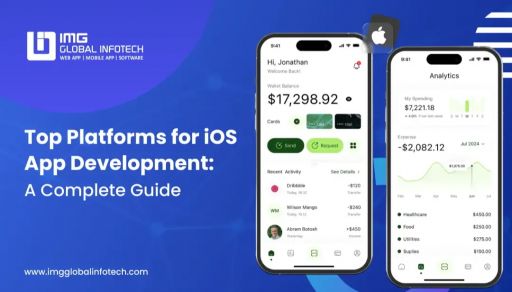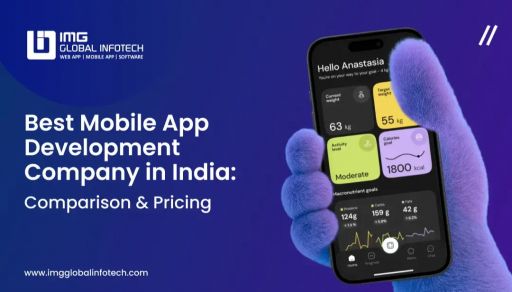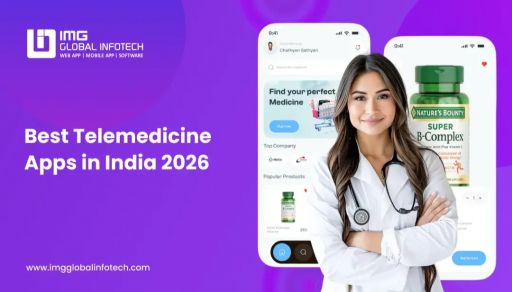How To Build An On-Demand Food Delivery App Like Postmates?
Mohit Mittal
Aug 05, 2025
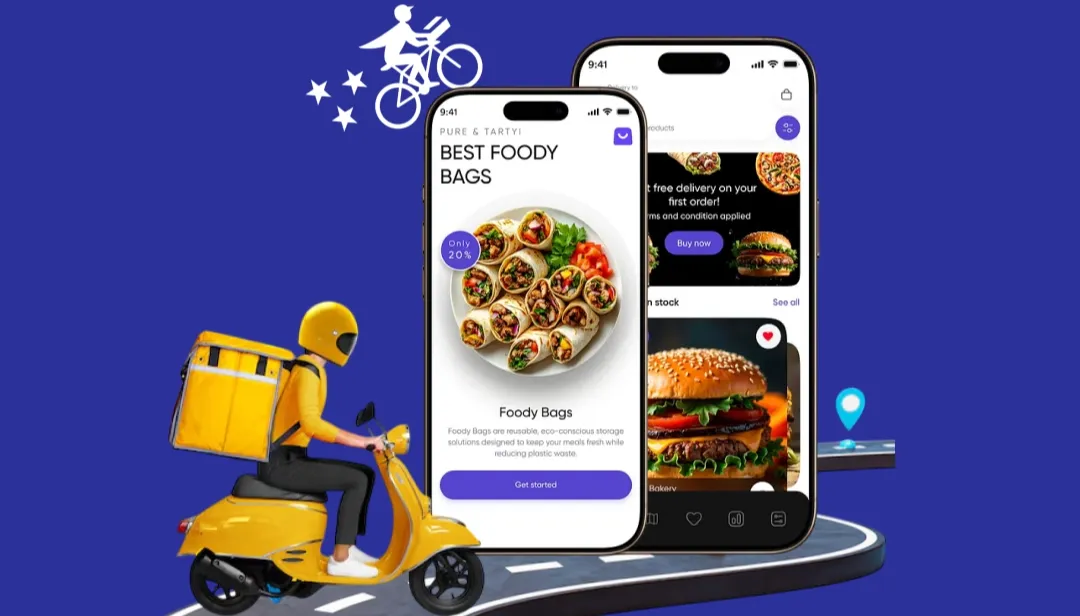
The way people shop and order essentials has changed dramatically in the last few years. With just a few taps on a smartphone, everything from your favorite meal to last-minute groceries can arrive at your doorstep. Among the platforms leading this shift, Postmates has set a strong benchmark in the on-demand delivery space by offering speed, variety, and convenience all in one place.
For entrepreneurs and startups, this growing demand presents an exciting opportunity. The on-demand economy continues to expand, and creating a Postmates-like app offers the potential to enter a market where reliability, user experience, and innovation are key to winning customers. However, food delivery app development goes beyond simply connecting buyers, sellers, and delivery partners, it requires careful planning, a robust tech foundation, and a strategic launch approach.
In this blog, we’ll guide you through the essential steps to build an app like Postmates, covering its features, tech stack, costs, monetization models, and challenges you need to navigate for a successful launch.
What Is Postmates?
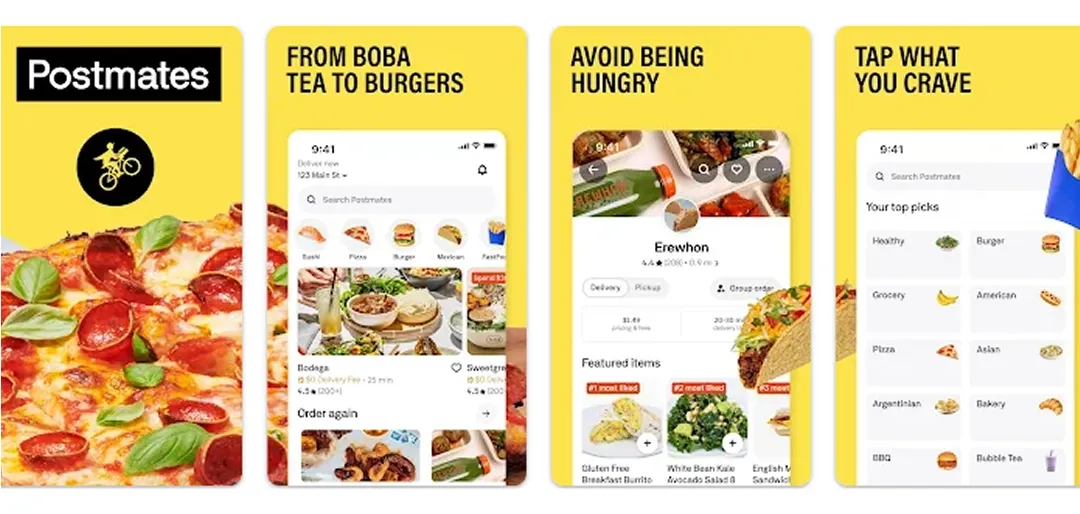
Postmates is an on-demand delivery service that allows users to order almost anything from local restaurants, grocery stores, retail shops, and convenience stores, and have it delivered directly to their doorstep. Launched in 2011 in San Francisco, Postmates quickly grew into one of the most versatile food delivery apps in the USA, thanks to its ability to deliver more than just food.
In 2020, Postmates was acquired by Uber, expanding Uber’s delivery network alongside Uber Eats. Today, Postmates continues to operate under its own brand in many U.S. cities, offering flexible delivery services that go beyond standard food delivery, including groceries, alcohol, electronics, and personal items.
Its success lies in its promise: “Anything, anytime, anywhere.” This flexibility has made Postmates a go-to solution for customers looking for speed and convenience, and a strong business model for entrepreneurs aiming to launch their own on-demand grocery delivery app.
Essential Features of an App Like Postmates
Developing a Postmates-like app isn’t just about replicating delivery functions, it’s about designing an integrated platform where customers, delivery partners, and merchants interact seamlessly. The strength of the platform comes from its ability to deliver a frictionless experience at every stage, from browsing products to final delivery.
Below is a detailed breakdown of the essential features you’ll need to include for each user type.
1. Customer App Features
The customer app is the heart of the platform, as it’s where users place orders and engage with the brand. A simple, fast, and intuitive UI/UX services are essential to retain customers.
-
User Registration & Login: Allow users to register quickly using email, phone number, or social media accounts. Support one-click logins for returning customers.
-
Search & Filters: A well-structured search system helps users find what they need quickly. Add filters for cuisine type, store category, delivery time, or price range.
-
Real-Time Order Tracking: Customers should be able to see exactly where their order is, from preparation to pickup to delivery in real time. Integrating live GPS tracking builds trust.
-
Multiple Payment Options: Include credit/debit cards, digital wallets (Apple Pay, Google Pay), UPI, or COD for flexibility. Offering multiple payment methods boosts conversions.
-
Push Notifications: Keep customers informed with alerts about order confirmation, preparation status, driver location, delivery time, and promotions.
-
Ratings & Reviews: Allow customers to leave feedback on restaurants and drivers. This helps maintain service quality and builds community trust.
-
Order History & Reordering: Customers should be able to view past orders and reorder favorite items in just a few taps.
2. Delivery Partner App Features
The delivery partner app is designed for couriers, enabling them to manage deliveries efficiently and maximize earnings.
-
Profile Setup & Verification: Delivery partners need to upload documents for verification (driver’s license, ID, background check).
-
Order Acceptance & Rejection: Couriers should be able to accept or decline orders based on location, distance, or schedule.
-
Navigation & Route Optimization: Integrated GPS and mapping tools help drivers choose the fastest delivery route, reducing delivery times and fuel costs.
-
Earnings Dashboard: A clear earnings panel helps drivers track daily, weekly, and monthly payouts, along with bonuses and tips.
-
In-App Communication: Delivery partners can contact customers or support for special instructions or in case of issues.
-
Delivery Status Updates: Options like “Picked Up”, “En Route”, and “Delivered” keep customers and admins updated in real time.
3. Merchant/Restaurant Panel Features
The merchant app or web dashboard allows restaurants and stores to manage orders, menus, and pricing in real time.
-
Menu & Inventory Management: Merchants can add, edit, or remove items, update stock availability, and adjust prices.
-
Order Management: A real-time order dashboard allows merchants to accept, prepare, and mark orders as ready for pickup.
-
Pricing & Offers: Merchants can create discounts, coupons, and special offers to attract customers.
-
Sales Analytics: A reporting section shows order trends, earnings, and customer preferences, helping merchants make data-driven decisions.
4. Admin Panel Features
The admin panel is the control center that ensures smooth operation of the platform.
-
User Management: Admins can manage customers, merchants, and delivery partners, including onboarding, suspensions, and profile edits.
-
Order & Delivery Tracking: Real-time tracking of all orders ensures delivery timelines are met and helps resolve issues quickly.
-
Commission & Payment Management: Admins can configure commission percentages, payment settlements, and payouts for delivery partners and merchants.
-
Promotions & Campaigns: Admins can create platform-wide promotions, loyalty programs, and seasonal campaigns to boost engagement.
-
Reports & Analytics: Access to detailed sales data, delivery performance, and customer behavior helps in making strategic improvements.
Step-by-Step Development Process of Food Delivery App Like Postmates
Building an app like Postmates requires more than just writing code, it’s a carefully planned process that ensures the app is scalable, secure, and user-friendly. Below is a step-by-step roadmap to guide startups, entrepreneurs, and businesses in developing a pickup and delivery app.
1. Market Research & Competitive Analysis
Before mobile app development begins, research is crucial to identify:
-
Target market – Decide whether to start in a single city or multiple locations.
-
Competitors – Analyze apps like Postmates, DoorDash, Uber Eats, Grubhub, etc.
-
User pain points – Find gaps in service, pricing, or features you can improve on.
-
Local regulations – Understand delivery, food safety, and licensing rules.
2. Define the Business Model
A clear business model ensures revenue sustainability:
-
Commission-based (percentage from each order)
-
Delivery charges (paid by customers)
-
Subscription plans (like Postmates Unlimited)
-
Advertising & promotions (featured merchants, in-app ads)
3. Wireframing & UI/UX Design
The design phase focuses on creating a smooth, intuitive user experience:
-
Wireframes – Sketch the layout of each app screen.
-
User Flow Mapping – Define how customers move from browsing to checkout.
-
UI/UX Design – Create visually appealing, brand-aligned designs.
4. MVP Development (Minimum Viable Product)
Start with a basic version of the app that includes essential features:
-
Customer App – Registration, search, order placement, payments, tracking.
-
Delivery Partner App – Order acceptance, navigation, earnings tracking.
-
Merchant Panel – Menu management, order handling.
-
Admin Panel – Order monitoring, user management.
5. Backend Development & API Integration
The backend powers the app’s functionality:
-
Server & Database Setup – Secure cloud-based infrastructure (AWS, Google Cloud, Azure).
-
APIs – Integration for maps (Google Maps), payments (Stripe, PayPal), push notifications (Firebase), and SMS/email services.
-
Security – SSL encryption, data privacy compliance (GDPR, CCPA).
6. Testing & Quality Assurance
Testing ensures a bug-free, smooth experience:
-
Functional Testing – Check all app functions.
-
UI/UX Testing – Validate ease of navigation.
-
Performance Testing – Ensure the app runs well under heavy load.
-
Security Testing – Check for vulnerabilities.
7. Deployment & Launch
Once testing is complete:
-
Deploy the app on Google Play Store and Apple App Store.
-
Prepare marketing campaigns (social media, influencer partnerships, launch offers).
-
Monitor early feedback and be ready to release updates quickly.
8. Post-Launch Support & Scaling
The work doesn’t end at launch:
-
Bug Fixes & Updates – Release regular improvements.
-
Feature Enhancements – Add advanced features like AI recommendations, loyalty programs, or multiple payment methods.
-
Geographic Expansion – Roll out in more cities or regions based on demand.
How Much Does Postmates Like App Development Cost?
The cost of developing an app like Postmates can vary widely depending on factors such as the app’s complexity, features, design quality, technology stack, and the location of the development team. Approximately, a Postmates like food delivery app development cost can range between $15,000 to $49,000+ for a fully featured platform with advanced capabilities.
Marketing Strategies for Your Postmates-Like App
1. Pre-Launch Marketing
-
Create teaser campaigns on social media (countdowns, sneak peeks).
-
Launch early sign-up offers for users and delivery partners.
-
Partner with local restaurants and shops before launch.
-
Build a landing page to collect leads and generate interest.
2. Launch Phase Marketing
-
Run location-based ads on Google, Facebook, Instagram, and TikTok.
-
Collaborate with local influencers (food bloggers, lifestyle creators).
-
Offer launch discounts and promo codes to attract first-time users.
-
Organize press releases and local media coverage.
3. Post-Launch Growth Strategies
-
Referral Programs – Reward users for inviting friends.
-
Loyalty Programs – Free delivery or discounts after set order numbers.
-
Seasonal offers (festive discounts, weekend deals).
-
Push notifications for personalized offers based on order history.
4. App Store Optimization (ASO)
-
Optimize app title, description, and keywords for better ranking.
-
Use high-quality screenshots and promo videos.
-
Collect positive reviews and ratings to improve visibility.
5. Delivery Partner Recruitment Marketing
-
Highlight earning potential and flexible work hours.
-
Offer sign-up bonuses for early drivers.
-
Promote through local classifieds, social media, and job boards.
6. Data-Driven Retention Marketing
-
Track user behavior to identify most-ordered products and peak times.
-
Send personalized notifications (special deals, reorder prompts).
-
Segment users based on activity for targeted campaigns.
Top 5 Postmates Alternatives in the USA
1. DoorDash
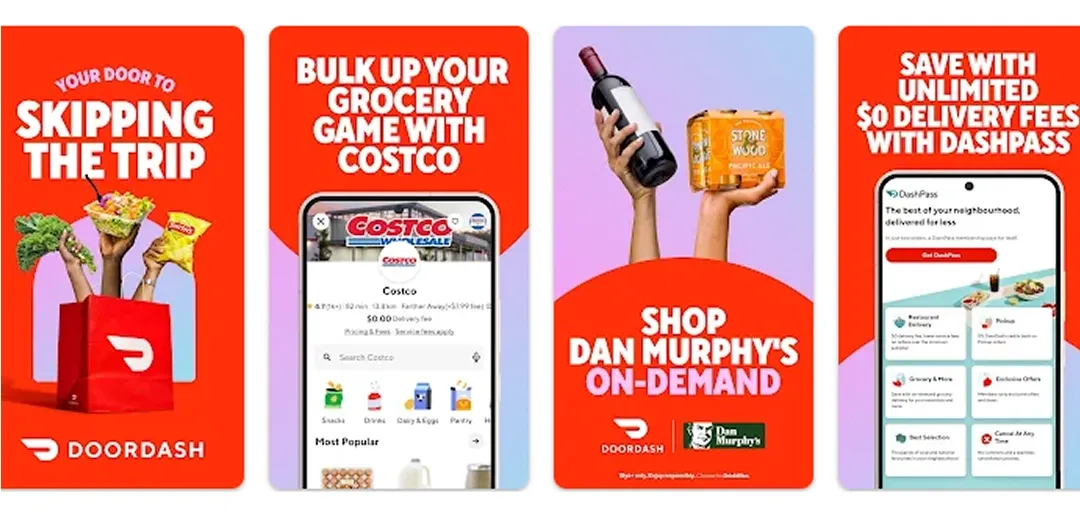
DoorDash is one of the largest food delivery platforms in the U.S., covering over 7,000 cities. It offers restaurant deliveries, grocery services, and convenience store items. With features like DashPass (subscription for free delivery) and group ordering, it’s a direct competitor to Postmates.
2. Uber Eats
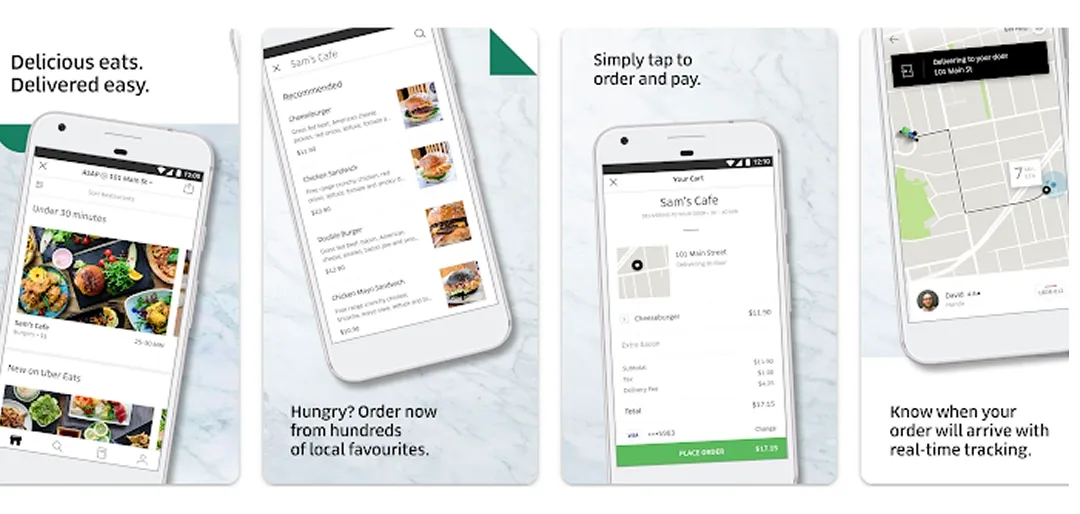
As the company that acquired Postmates, Uber Eats remains a strong alternative. It offers a wide variety of restaurant options, real-time tracking, scheduled deliveries, and integrated promotions. Its large driver network ensures faster deliveries in most cities.
3. Grubhub

Grubhub serves millions of users across the U.S. with partnerships spanning national chains and local eateries. Its subscription plan, Grubhub+, offers free delivery and exclusive discounts, making it a strong competitor for regular customers.
4. Instacart
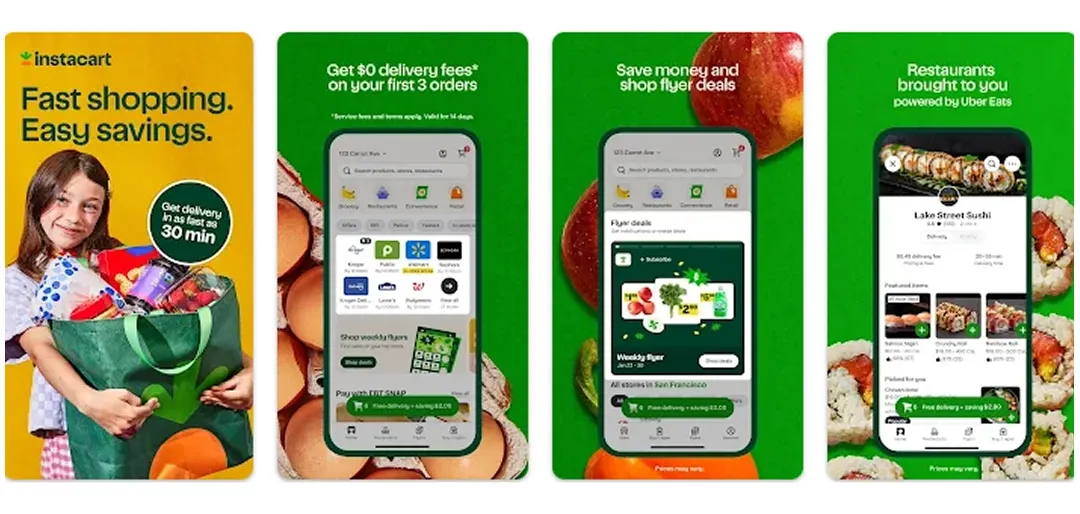
While primarily a grocery delivery service, Instacart has expanded into convenience and retail deliveries. It partners with major supermarkets like Costco, Kroger, and Aldi, allowing customers to order groceries and household essentials with same-day delivery.
5. GoPuff
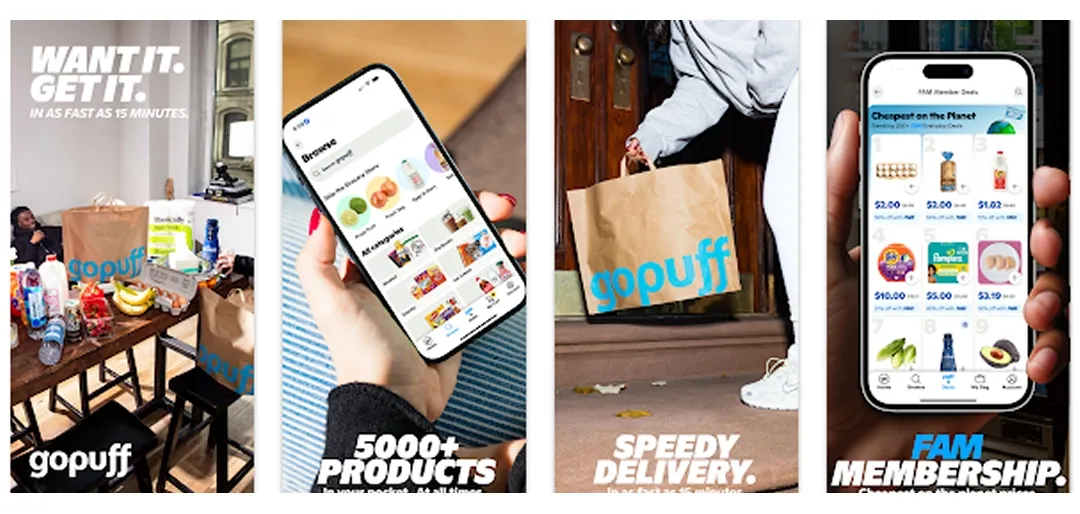
GoPuff operates on a slightly different model, focusing on quick delivery of everyday essentials, snacks, drinks, over-the-counter medicine, and convenience items. With its own micro-fulfillment centers, GoPuff ensures deliveries in under 30 minutes in many areas.
Conclusion
Building an app like Postmates presents a promising opportunity in the fast-growing on-demand delivery market. With consumer demand for speed, convenience, and variety at an all-time high, a well-planned on-demand delivery app can become a profitable venture. Success, however, depends on more than just launching an app, it requires careful planning, a robust tech stack, a seamless user experience, and a solid marketing strategy.
Whether you start with an MVP or go straight for a full-scale solution, focusing on scalability, service quality, and customer satisfaction will help your platform stand out. By offering competitive features, strategic partnerships, and targeted marketing, you can create an app like postmates that competes with established players like Postmates while carving out your own loyal customer base.
Mohit Mittal is the co-founder of a leading IT company with over a decade of experience in driving digital transformation and innovative tech solutions. With a strong background in software development, Mobile app development, E-commerce, business strategy, and team leadership, Mohit Mittal is passionate about helping businesses scale through technology. When not solving complex tech challenges, he enjoys sharing insights on emerging trends, entrepreneurship, and the future of IT.


